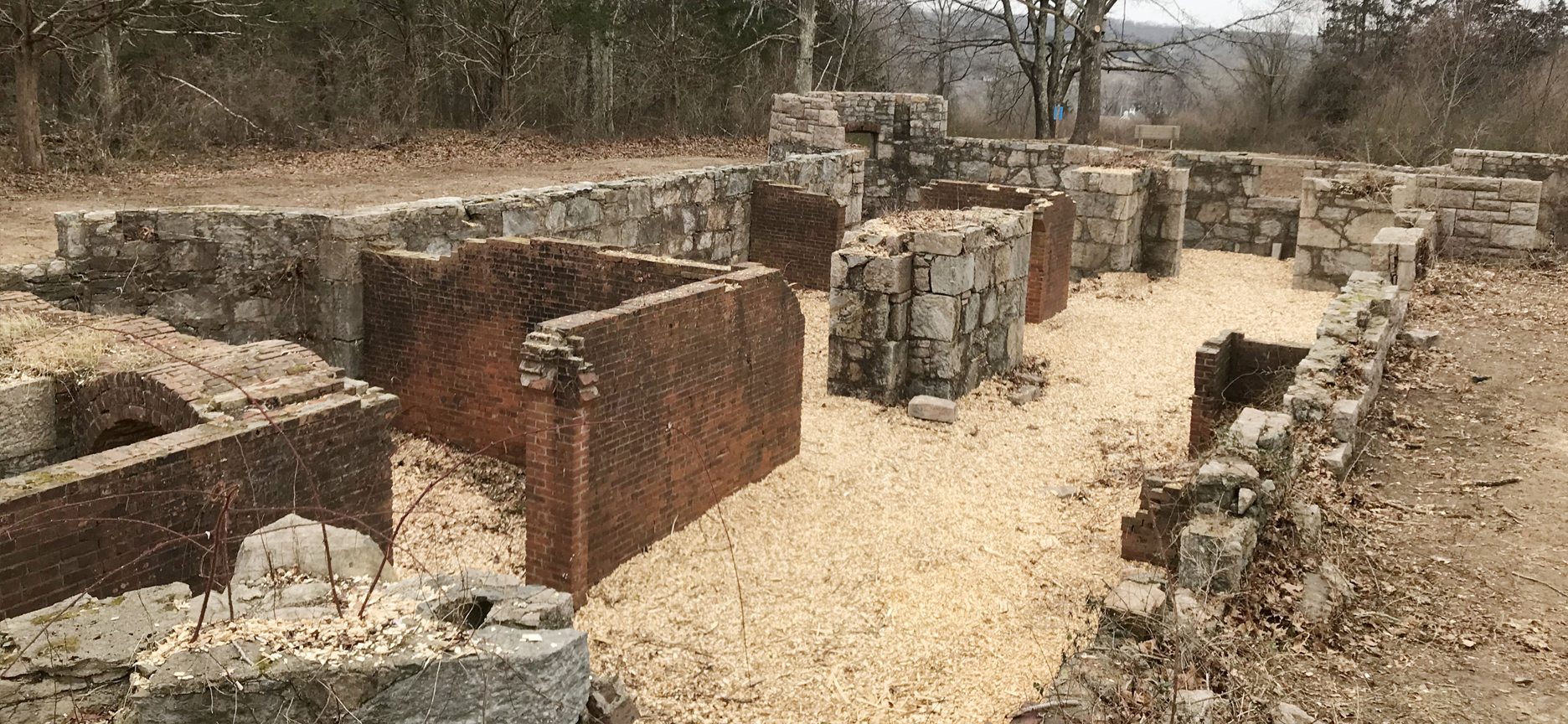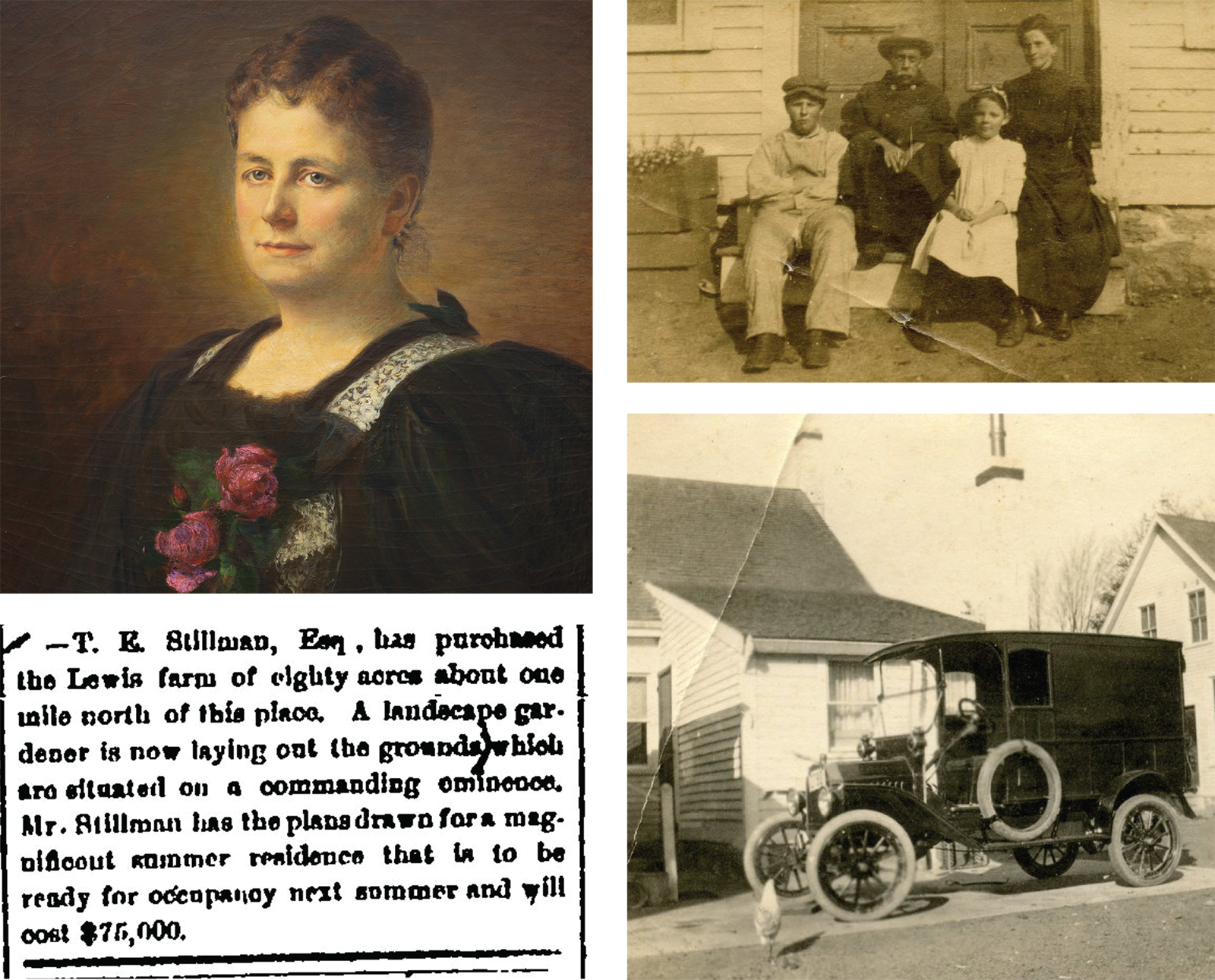A foundation hidden by nature
STATION 3 of the GREENMANVILLE SELF-GUIDED TOUR

As part of a three-year grant from the Edward and Mary Lord Foundation, the remnants of the mansion at the crest of the farm hill were stabilized and protected as a structure of historical significance. Recent reconstruction of features such as an arch, coal chute and a stone stairway have been made to improve safety and accessibility for use as an outdoor gathering space.
As you emerge from Gallup Orchard near Hamm Pavilion or by the northern end of the Greenmanville Trail, you will find a partial masonry structure known as the Stillman Mansion foundation atop the ridge line of the property. In 1891, Thomas E. Stillman, Esq. and (Charlotte) Elizabeth Greenman Stillman acquired the 80 acres previously held by the elder Greenmans and then Elizabeth’s cousin Hattie Greenman. In the following year, construction began on what was reported in local papers to be a “magnificent summer residence.”
Elizabeth, being of Greenman descent and of Greenmanville, may have initially influenced the choice to summer here in Mystic overlooking the beautiful Pequotsepos Valley. The estimated cost of construction from various sources for this summer home was said to be between $75,000 and $100,000 with 49 proposed rooms. The Stillmans’ primary residence at the time was in Brooklyn, NY. The architect of what remains only stones and bricks is still unknown. Pink granite laid in the foundation here at the farm is similar to what was used in the Mystic Noank Library constructed the same year. The granite used in the library came from Leete’s Island in Guilford, CT; however, recent masonry work at the Stillman Mansion foundation points to Westerly as the source of pink granite in the foundation. And so the puzzle continues. The connection in date of construction to the Mystic Noank Library may yet yield further information about the unfinished foundation. The decision to halt construction of their summer house remains a mystery to this day. Factors such as the Panic of 1893, close family deaths and business interests in California may have guided the Stillmans’ decision to summer elsewhere.
Later in 1899, the Stillmans did complete construction of a stunning, neo-Renaissance style residence on the east side of Central Park in New York City, where Thomas had been a lawyer and partner in the firm (Butler) Stillman & Hubbard. Just a few years later, Elizabeth succumbed to pneumonia, leaving Thomas and their four daughters grief-stricken, likely influencing the sale of the Mystic acreage to Walter C. Morgan in 1902. Coogan Farm, the current name of the acreage, was established after Walter’s daughter Clara Avery Morgan inherited the property and married Clarence A. Coogan in 1918.
Share the Greenmanville Trail web tour!

Pictured above: (Top left) Oil portrait of Elizabeth (Greenman) Stillman by Pierre Boulicaut from Mystic Seaport Museum. (Bottom left) Article from the Stonington Mirror, dated Saturday, August 29, 1891, from the Stonington Historical Society. (Top right) Photograph of the Morgan family from 1912: Walter Morgan, Sr. and his wife, Martha Jane (Wheeler) Morgan, with son Walter, Jr. and daughter Clara Avery Morgan on the market front steps at the farm. (Bottom right) Coogan milk truck with the meat market in the background from the early 1920s. Right side images are from the Coogan Collection at the Mystic River Historical Society.


